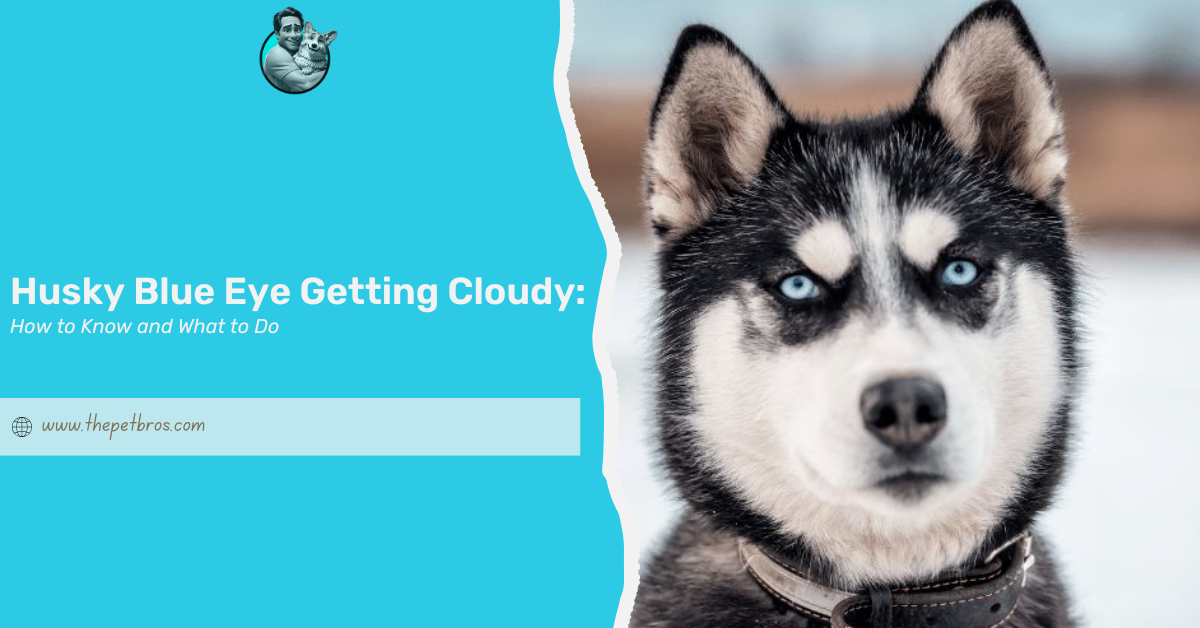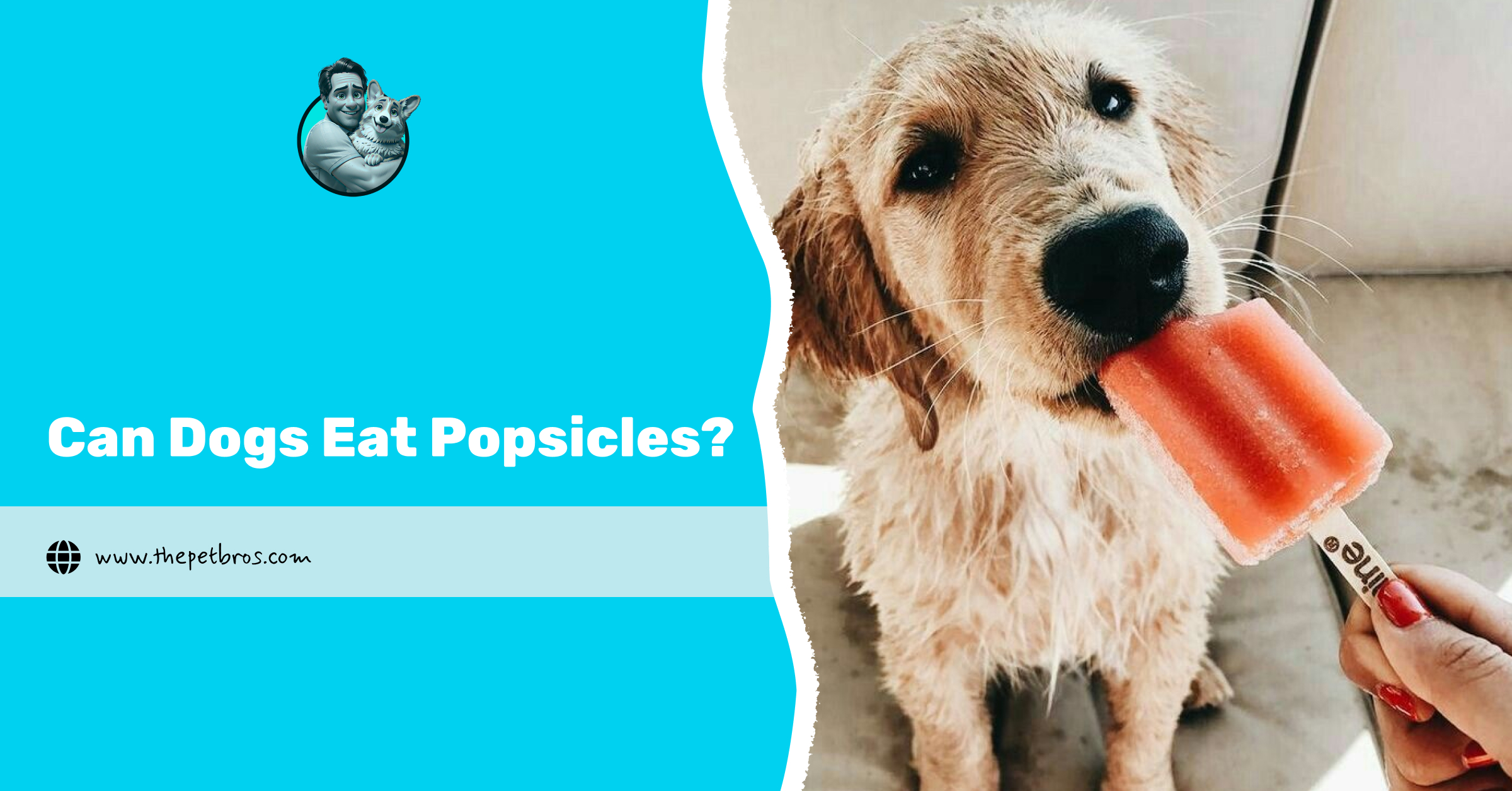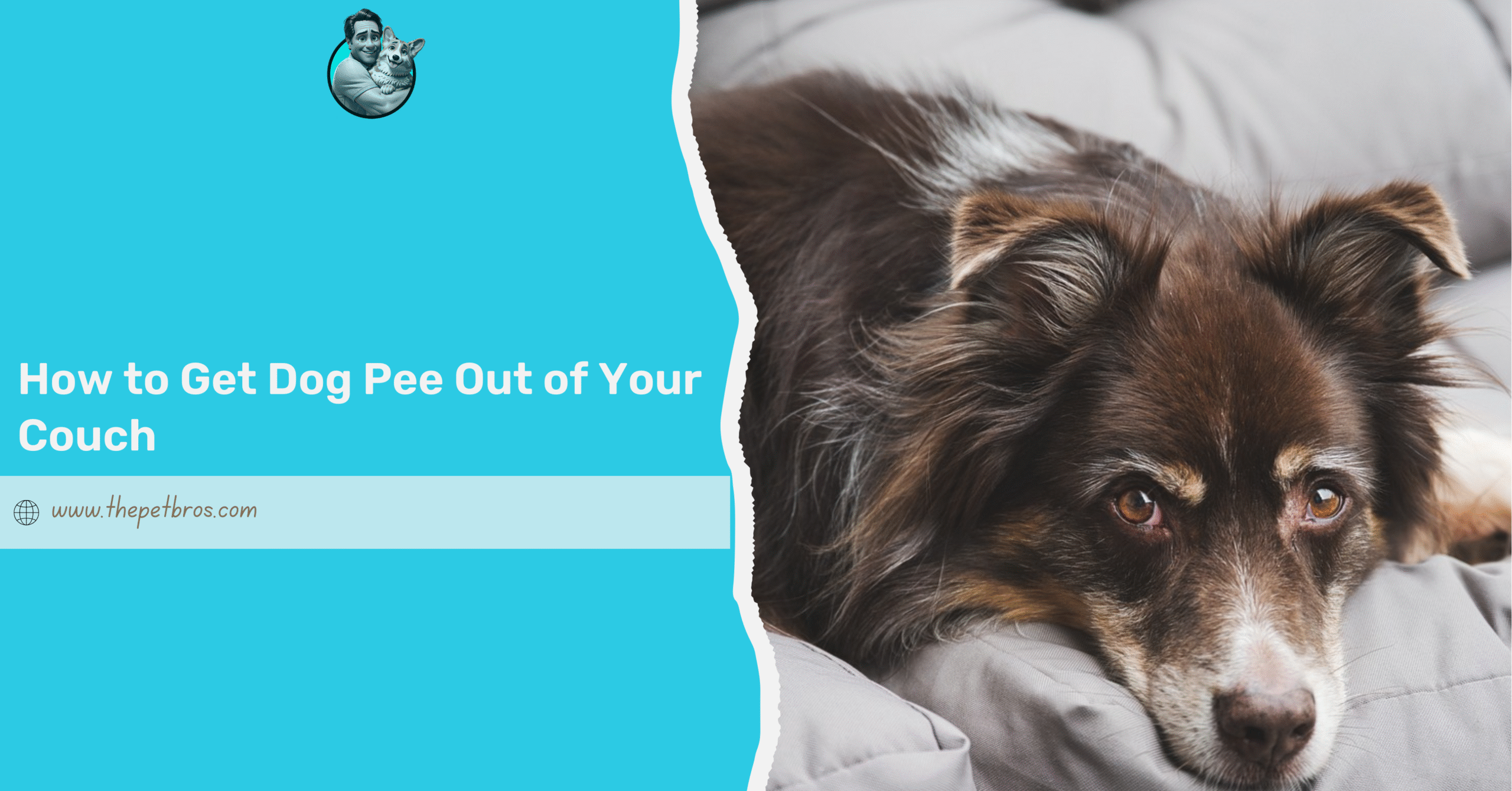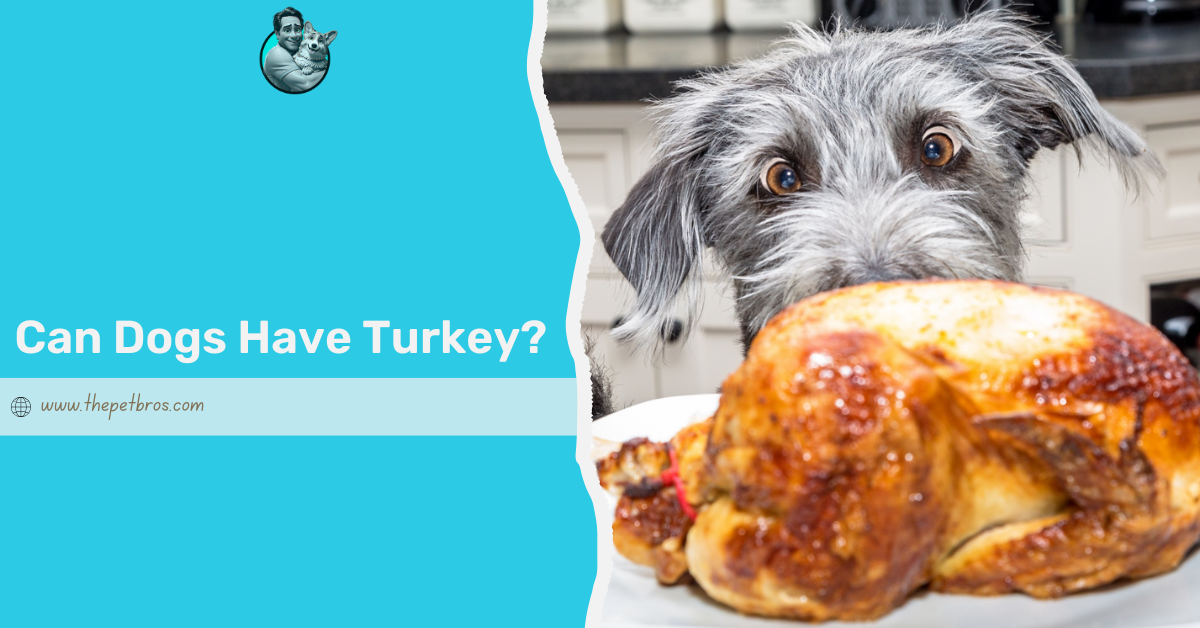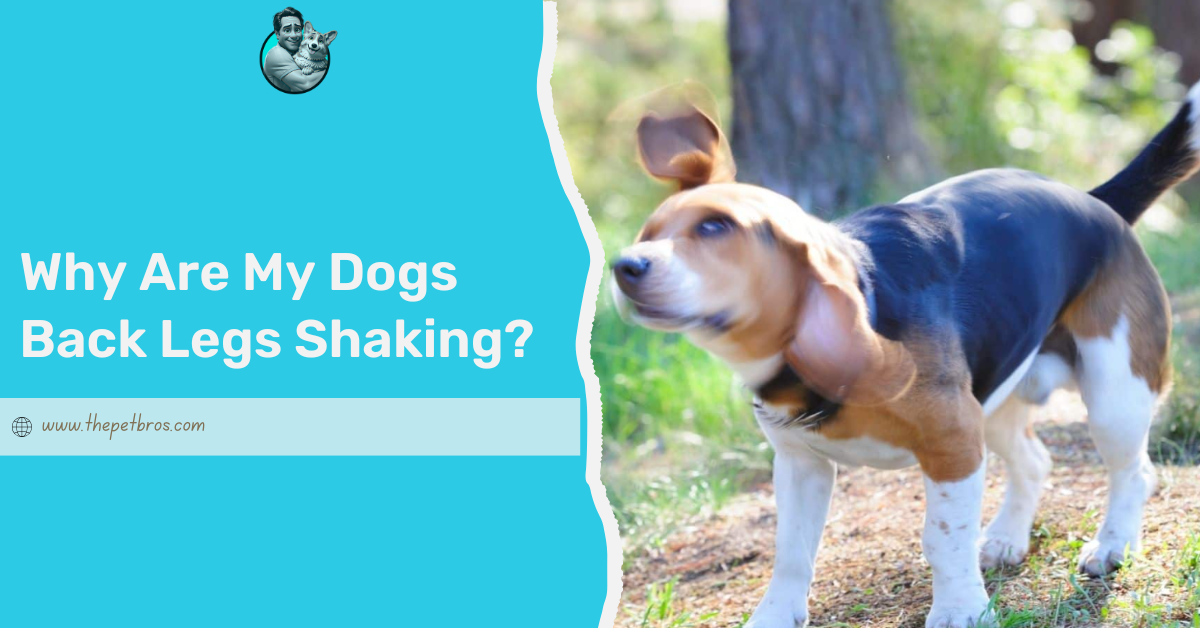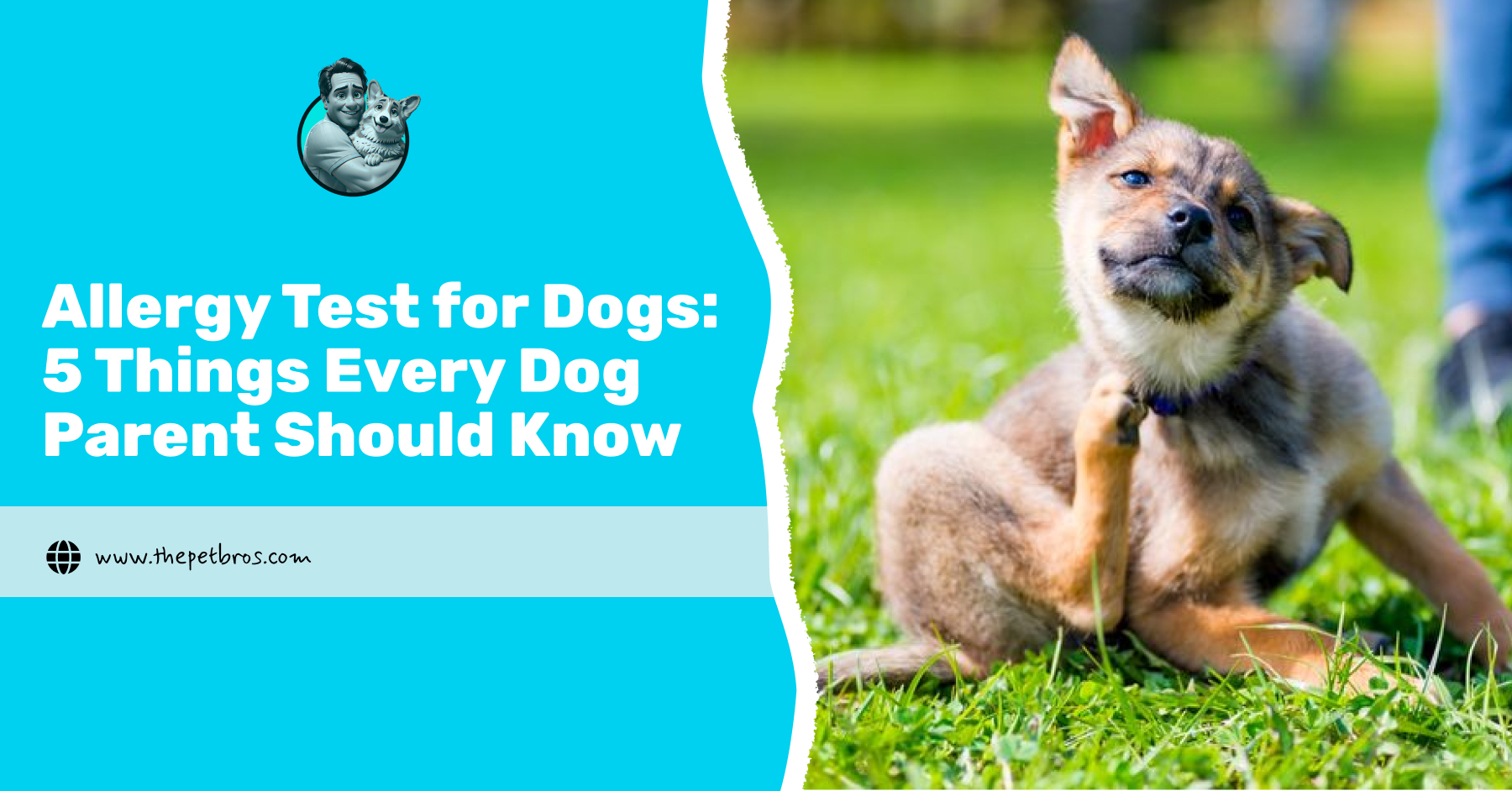Huskies are known for their striking blue eyes, but what happens when one or both eyes start getting cloudy? While some causes may be minor and treatable, others could indicate serious health concerns requiring immediate attention. Understanding the potential causes and symptoms of cloudy eyes in Huskies can help you take the necessary steps to protect your dog’s vision and overall well-being.
In this article, we’ll explore why your Husky’s blue eye may become cloudy, how to recognise the warning signs, and what you can do to address the issue.
First, Why Is Your Husky Blue Eye Getting Cloudy?
Corneal dystrophy, which describes a cloudy appearance in your Husky’s eye, is a common condition among the breed. While all Huskies are prone to this condition, females are more likely to develop this eye problem. A cloudy dog eye may have a white or blue haze within or on the eye’s outer surface. Most of the time, this isn’t a medical emergency, though some cases are.
If your dog is in significant pain or its eye appears bulging, seek emergency attention. But before discussing the details of what causes this disease, let’s explore the different types of corneal dystrophy.
Types of Corneal Dystrophy in Dogs
Corneal dystrophies in dogs are classified based on the affected corneal layer: epithelial, stromal, and endothelial.
1. Epithelial Corneal Dystrophy
Epithelial dystrophy is an eye disease that affects the cornea’s outermost layer. The primary sign of this condition is cloudy, grey, or white patches on the cornea, known as corneal opacity. In some older Huskies, these opaque patches may be the only symptom. While the condition may not cause immediate discomfort, regular monitoring is essential to preserving your Husky’s ocular health.
Key Features of Epithelial Corneal Dystrophy:
- Affects the outermost layer of the cornea
- Causes small, greyish-white opacities
- Usually painless but may lead to vision impairment over time
Corneal dystrophies are rarely treatable in the early stages. However, as the condition progresses, your veterinarian may recommend a consultation with a canine ophthalmologist. These specialists can assess your Husky’s risk of developing corneal lesions, which could lead to complications. Some symptoms of affected Huskies are corneal pain, squinting, and light sensitivity.
Early detection and proper veterinary care can help manage this condition and reduce the risk of vision loss. Regular eye check-ups are crucial in keeping your Husky’s vision healthy.
2. Stromal Corneal Dystrophy
Stromal corneal dystrophy is an eye condition affecting the cornea’s middle layer (stroma). It is characterised by lipid (fat) or crystalline deposits, which create a cloudy or hazy appearance in the eye.
This condition is common in breeds such as Beagles, Cavalier King Charles Spaniels, and Siberian Huskies. While stromal corneal dystrophy is typically not painful, if the deposits continue to build up over time, it can lead to vision impairment.
Key Features of Stromal Corneal Dystrophy:
- Affects the middle layer (stroma) of the cornea
- Causes lipid or crystalline deposits, leading to cloudiness
- Common in Beagles, Cavalier King Charles Spaniels, and Siberian Huskies
Regular eye check-ups are important to monitor the progression of this condition. Sometimes, a veterinarian may recommend dietary adjustments or specialised treatments to help manage the deposits and maintain your Husky’s eye health.
3. Endothelial Corneal Dystrophy
Endothelial Corneal Dystrophy (ECD) is an eye condition that affects the innermost layer of the cornea, known as the endothelium. Although this type of corneal dystrophy is most common in small dog breeds like Dachshunds, Chihuahuas, and Boston Terriers, Siberian Huskies are also susceptible. Early detection is crucial, as the condition can lead to severe complications such as corneal ulcers and even blindness if left untreated.
Key Features of Endothelial Corneal Dystrophy
- Affects the Endothelium: Targets the cornea’s innermost layer, which helps maintain clarity.
- Fluid Build-Up (Edema): Causes fluid accumulation in the cornea, leading to swelling.
- Corneal Swelling: Swelling can result in blurred vision and discomfort.
Your dog’s corneal issues may present symptoms like corneal oedema, where fluid build-up causes its eye to appear cloudy or bluish. There can also be a case of blurred vision, where swelling can impair your dog’s vision, making it difficult for your dog to see clearly. This condition can lead to painful corneal ulcers on your dog’s cornea. Your dog may also become sensitive to light, squinting or avoiding bright light due to discomfort. In severe cases, your dog’s condition can progress to complete blindness if not addressed.
Causes of Corneal Dystrophy in Dogs
Knowing the types and how they can be easily spotted is vital for early detection and treatment. As I have mentioned, not all eye cloudiness conditions are fatal, as various factors, including age, injury, infections, or underlying medical conditions, cause them. Below are some of the most common reasons:
1. Cataracts
Cataracts occur when the eye’s lens becomes opaque, leading to cloudiness. This condition is more common in older dogs but can also develop due to genetics, diabetes, or eye trauma. If left untreated, cataracts can cause partial or complete blindness.
- Symptoms: Hazy or milky appearance in the eye, difficulty seeing in dim light, frequent bumping into objects.
- Treatment: Surgery is the only effective way to remove cataracts and restore vision.
2. Nuclear Sclerosis
Nuclear sclerosis is a natural ageing process in dogs where the lens hardens and appears bluish or cloudy. Unlike cataracts, nuclear sclerosis is typically harmless and does not significantly affect vision.
- Symptoms: Gradual cloudiness in both eyes, usually without noticeable vision loss.
- Treatment: No treatment is necessary, but regular eye check-ups are advised to monitor any changes.
3. Glaucoma
Glaucoma is an eye disease caused by increased pressure inside the eye. If not treated promptly, it can cause cloudiness, pain, redness, and even vision loss. Huskies are particularly prone to this condition, making early detection crucial.
- Symptoms: Cloudy or bluish tint, redness, excessive tearing, squinting, dilated pupils.
- Treatment: Requires immediate veterinary intervention with medications or surgery to relieve pressure.
4. Corneal Ulcers or Injuries
Scratches, infections, or foreign objects in the eye can lead to corneal ulcers. These ulcers may cause cloudiness, excessive tearing, and discomfort. A vet visit is essential to prevent complications.
- Symptoms: Cloudy or bluish tint, redness, excessive tearing, squinting, dilated pupils.
- Treatment: Requires immediate veterinary intervention with medications or surgery to relieve pressure.
5. Uveitis (Inflammation of the Eye)
Uveitis is inflammation inside the eye, often due to infections, autoimmune diseases, or trauma. Symptoms include cloudiness, redness, squinting, and sensitivity to light. Prompt veterinary care is needed to address this condition.
- Symptoms: Eye pain, squinting, excessive blinking, light sensitivity, visible swelling.
- Treatment: Anti-inflammatory medications and treating the underlying cause.
6. Dry Eye (Keratoconjunctivitis Sicca)
If your Husky’s eyes are not producing enough tears, they may become dry and cloudy. If left untreated, this condition can lead to irritation and potential damage to the cornea.
- Symptoms: Thick eye discharge, redness, excessive blinking, and swollen eyelids.
- Treatment: Prescription eye drops to stimulate tear production and keep the eyes lubricated.
So, When Should You Be Concerned?
Not every case of cloudy eyes in Huskies is serious, but some situations require urgent veterinary attention. You should seek help if:
- The cloudiness appears suddenly and worsens over time.
- Your Husky is squinting, rubbing their eye, or showing signs of pain.
- There is redness, swelling, or excessive discharge.
- Your dog’s vision seems impaired, or it bumps into objects.
- Other symptoms like lethargy or loss of appetite accompany the cloudy appearance.
- Early intervention can prevent potential vision loss and discomfort, so it’s best to consult a veterinarian if you notice any of these warning signs.
How to Prevent and Manage Cloudy Eyes in Huskies
Taking proactive steps to maintain your Husky’s eye health can help reduce the risk of cloudiness and vision problems. Here are some preventive measures:
- Regular Eye Check-Ups: Routine vet visits ensure that any eye problems are detected early. Regular eye exams are especially important for Huskies, as they are predisposed to certain genetic eye conditions.
- Proper hygiene: Dirt, debris, and irritants can contribute to eye infections and cloudiness. Regularly cleaning your Husky’s face, especially around the eyes, can help prevent buildup that might lead to irritation. Grooming also plays a key role, including butt-licking. However, excessive butt-licking may signal an underlying problem.
- Provide a Balanced Diet: Good nutrition plays a crucial role in maintaining eye health. Omega-3 fatty acids, antioxidants, and essential vitamins like A, C, and E support overall vision health. Adding dog-friendly fruits and vegetables to their diet can provide these vital nutrients, helping keep your Husky’s eyes in top shape..
- Protect Against Injuries: Keep your Husky away from environments where eye injuries are more likely, such as areas with sharp objects, excessive dust, or aggressive play with other pets.
- Manage Underlying Conditions: If your Husky has diabetes, autoimmune disorders, or other health conditions that could affect their eyes, follow your vet’s advice for management and treatment.
What to Do If Your Husky’s Eye Is Getting Cloudy
- Observe Closely: Monitor additional symptoms such as redness, discharge, excessive blinking, or behavioural changes.
- Schedule a Vet Visit: Early diagnosis is key. If cloudiness persists for more than a few days, consult a veterinarian. The vet may perform tests like eye pressure measurements or light response tests.
- Avoid Home Remedies: Never use human eye drops or medications without veterinary approval, as some ingredients can harm dogs.
- Maintain Eye Health: Gently clean your Husky’s eyes with a damp cloth to remove debris. Provide a balanced diet rich in antioxidants to support eye health.
- Consider Specialist Care: If your vet suspects a serious condition like glaucoma or cataracts, they may refer you to a veterinary ophthalmologist for advanced treatment options.
Conclusion
A cloudy blue eye in your Husky may not always be a cause for alarm, but it’s essential to monitor changes and seek veterinary care if needed. Early detection and proactive care are key to protecting your Husky’s eye health. Regular veterinary check-ups are essential to help identify potential issues before they worsen. If you notice any changes in your dog’s eyes, such as persistent cloudiness, squinting, excessive tearing, or signs of discomfort, it’s important to consult a vet promptly. They can perform tests and evaluations to diagnose the condition and accurately recommend the most appropriate treatment.
As a dog owner, you can ensure your Husky maintains clear, healthy eyes for years by staying proactive with check-ups, hygiene, and diet.
FAQS
Is a cloudy eye in a husky always a sign of blindness?
Not necessarily. While some conditions, like cataracts and glaucoma, can lead to blindness, other causes, like nuclear sclerosis, are harmless and do not significantly affect vision.
How do I know if my Husky’s cloudy eye is painful?
Excessive blinking, squinting, rubbing the eye, and reluctance to open it fully are signs of pain. If your Husky exhibits these behaviours, a vet visit is recommended.
Can I treat my Husky’s cloudy eye at home?
Home treatment is not recommended unless advised by a vet. Using the wrong treatment can worsen the condition, so always seek professional guidance first. By being attentive to changes in your Husky’s eyes and acting promptly, you can help keep their vision sharp and their eyes healthy.
How is Corneal Dystrophy diagnosed?
Diagnosis is typically made through a thorough eye exam by a veterinarian or canine ophthalmologist, who may perform specialised tests to examine the cornea.
Is Corneal Dystrophy painful for dogs?
It may cause discomfort, such as squinting or light sensitivity, especially if the cornea becomes ulcerated or swollen.






